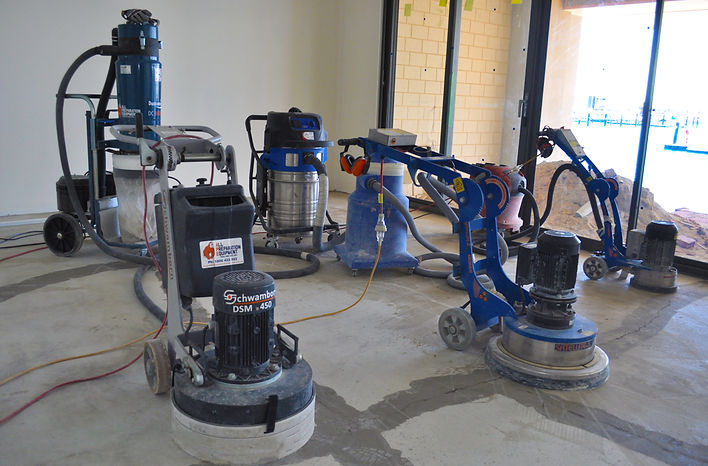
The key to a perfect finish,
-is perfection from the start.
-
Dust free Diamond Grinding
-
Levelling compounds
-
Installation over Ceramic Tiles
-
Glue removal
-
Existing floor removal
-
Custom concrete ramps to transition different heights
-
Moisture/rh testing & waterproofing solutions
I'm a paragraph. Click here to add your own text and edit me. It's easy.
A flooring installation is only as good as the substrate it is applied to. Concrete often has high and low spots, shutter marks, pop outs, cracks and defined points where the aggregate is to close to the surface. It is often difficult to spot these imperfections when looking at a concrete slab because there is a constant layer of dust residing on the top. When flooring is applied to the concrete these imperfections are visibly enhanced. To achieve a perfect flooring installation requires the equipment, skills and experience that Craft Flooring prides itself in. Older slabs not only have these common problems. But often also layers of adhesive, paint, epoxy and deteriorating levelling screed which all need to be removed to guarantee an adequate bond and smooth surface for the new flooring.
-Dust free Diamond Grinding
This process is dust free due to the equipment we have invested in.
To remove the wavy undulations in the concrete we map out the high and low points and begin grinding down the highs.
If the floor is excessively bad, we fill the low points with self leveller . Otherwise we change the blades to a less aggressive grit/ size and begin to gradually fade the different heights into a flat surface. The process is finished by changing to different blades to smooth all imperfections from the floor.
-3mm to 60mm self levelling compounds
Extremely uneven floors, or floors with various heights require a tailored solution of levelling compounds.
To reduce the cost, we grind the surface first requiring a thinner level of material. This also guarantees sufficient bond between the concrete, primer and levelling compounds.
Installation over Ceramic Tiles
We provide a cost saving service of levelling over ceramics, to install planks without the hassle of having them removed.
Removing ceramic tiles is a messy, physically intensive and expensive exercise. If you have skirtings installed after the ceramics, removing them to install another product usually leaves a gap around the perimeter and in between the skirting and the new floor.
Patching the grout lines isn't an adequate solution they will always show through the new floor. We begin by removing any loose tiles, then applying a 2 part primer to the ceramics. Lastly we screed over the primer with a self levelling compound with a high compressive strength.
-Glue removal
removing adhesives requires various methods depending on the type present. We have specific soft and hard bond as well as polycrystalline diamond grinding blades designed for different types of adhesive.
-Existing Flooring Removal
We remove carpets, vinyl and vinyl plank flooring in an efficient making your project much easier and reducing project duration.
In some instances existing vinyl flooring can be laid over with particular products reducing costs.
-Custom concrete ramps to transition different heights
Transitions into areas with a different height require concrete ramping to eliminate tripping hazards and create an even appearance.
This includes heights and levels on the different subfloors requiring new flooring, to merge the floors into one.
This also includes where the new floor finishes to another type of flooring such as a ceramic bathroom wet area.
-Moisture/rh testing & waterproofing solutions
Moisture content present within a slab should not exceed 75% relative humidity. If moisture is present and left unchecked the implications can be severe! from bubbling flooring to the scent and eventually mould. This can take years to occur and far to many installations go ahead untested. We test for moisture with a handheld RH meter, if there is excessive moisture present we test again with an in-situated meter for a more accurate reading. If a problem is identified the process requires grinding back the top layer for adequate penetration before applying a scentless gel which seals the capillaries in the concrete. The gel brings out impurities in the slab which are sanded away before a coating is applied to guarantee adhesion.
This is the safest and most cost effective method of sealing concrete before installation of flooring products.




j











